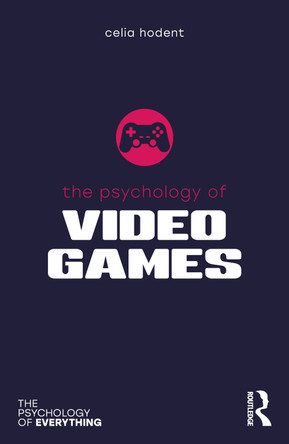Description
Making a successful video game is hard. Even games that are well-received at launch may fail to engage players in the long term due to issues with the user experience (UX) that they are delivering. That's why makers of successful video games like Fortnite and Assassin's Creed invest both time and money perfecting their UX strategy. These top video game creators know that a bad user experience can ruin the prospects for any game, regardless of its budget, scope, or ambition.
The game UX accounts for the whole experience players have with a video game, from first hearing about it to navigating menus and progressing in the game. UX as a discipline offers guidelines to assist developers in creating the optimal experience they want to deliver, including shipping higher quality games (whether indie, triple-A or "serious" games) and meeting business goals -- all while staying true to design vision and artistic intent.
At its core, UX is about understanding the gamer's brain: understanding human capabilities and limitations to anticipate how a game will be perceived, the emotions it will elicit, how players will interact with it, and how engaging the experience will be. This book is designed to equip readers of all levels, from student to professional, with cognitive science knowledge and user experience guidelines and methodologies. These insights will help readers identify the ingredients for successful and engaging video games, empowering them to develop their own unique game recipe more efficiently, while providing a better experience for their audience.
"The Gamer's Brain: How Neuroscience and UX Can Impact Video Game Design"
Is written by Celia Hodent -- a UX expert with a PhD in psychology who has been working in the entertainment industry for over 10 years, including at prominent companies such as Epic Games (Fortnite), Ubisoft, and LucasArts.
Major themes explored in this book:
- Provides an overview of how the brain learns and processes information by distilling research findings from cognitive science and psychology research in a very accessible way. Topics covered include: "neuromyths", perception, memory, attention, motivation, emotion, and learning.
- Includes numerous examples from released games of how scientific knowledge translates into game design, and how to use a UX framework in game development.
- Describes how UX can guide developers to improve the usability and the level of engagement a game provides to its target audience by using cognitive psychology knowledge, implementing human-computer interaction principles, and applying the scientific method (user research).
- Provides a practical definition of UX specifically applied to games, with a unique framework. Defines the most relevant pillars for good usability (ease of use) and good "engage-ability" (the ability of the game to be fun and engaging), translated into a practical checklist.
- Covers design thinking, game user research, game analytics, and UX strategy at both a project and studio level.
- This book is a practical tool that any professional game developer or student can use right away and includes the most complete overview of UX in games existing today.
About the Author
Celia Hodent is recognized as a leader in the application of user experience (UX) and cognitive science in the game industry. Celia holds a PhD in psychology and has over ten years of experience in the development of UX strategy and processes in video game studios. Through her work at Ubisoft (e.g. Rainbow Six franchise), LucasArts (e.g. Star Wars: 1313), and as Director of UX at Epic Games (e.g. Fortnite), she has contributed to many projects across multiple platforms, from PC to consoles, mobile, and VR. Celia is also the founder of the Game UX Summit, advisor for the GDC UX Summit, and author of The Gamer's Brain: How Neuroscience and UX can Impact Video Game Design. She currently works as a freelance Game UX Consultant, helping studios increase their games' likeliness of being engaging and successful.
Reviews
"The beauty of this book is that it is two things at the same time:
- 1. An amazingly complete introduction to psychology, using examples from video games to make the concepts clear and memorable.
- 2. An amazingly complete introduction to video game design, using psychology to help design more compelling games.
So whether you are a game designer, a player, or someone wishing to understand psychology, this is the book for you."
-Don Norman, Director, the Design Lab at the University of California, San Diego Author of The Design of Everyday Things
"By blending up-to-date brain science with game-relevant UX design principles, this book doesn't just give great tips about how to make better games, it gives designers the mental tools to get better at thinking about games. Read this, and suddenly you'll know what you're talking about."
-Jesse Schell, Game Designer, author of The Art of Game Design
"This book is an invaluable asset for game developers, whether you work in game design, user experience, or programming. With a lucid overview of the current best knowledge from cognitive psychology, Hodent provides guidelines and approaches to improve the game experience for players that are based on actual science."
-Raph Koster, Game Designer, author of A Theory of Fun for Game Design
Book Information
ISBN 9781498775502
Author Celia Hodent
Format Paperback
Page Count 272
Imprint CRC Press Inc
Publisher Taylor & Francis Inc
Weight(grams) 450g








